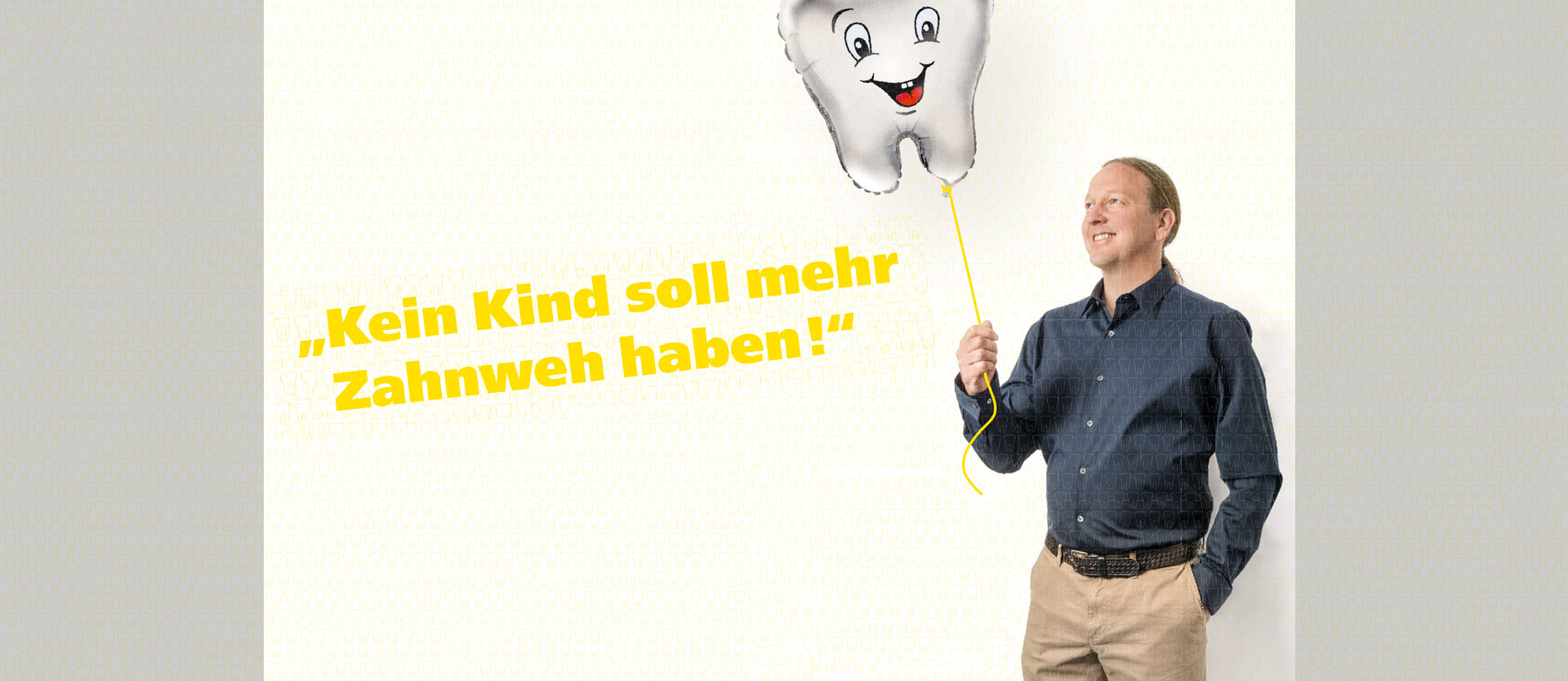
“Say Goodbye to Toothache, Kids!”

Mr. Adams, most of us associate the idea of a trip to the dentist with a sense of trepidation and, worst of all, a nasty drilling noise. Could that really be replaced by the gentle pulsing sound of a laser in the future?
Well, if the dentist was using our laser, the sound would be more pleasant for sure-and you certainly wouldn't have to be afraid of drilling. That's because our DL-500 is the first commercially available laser that is capable of replacing traditional drills and making treatment completely painless. Our aim is to trigger a new trend that could change the entire face of dentistry. Imagine a future in which kids could really say goodbye to toothache and never have to suffer from it again!
Before you tell us how you hope to achieve that, what's the current situation with lasers in dentistry?
Lasers have been used in dentistry since the 1990s. At first they were mostly Nd:YAG lasers, and they tended to be very large and expensive. Operating at a wavelength of 1.064 microns, they were totally unsuitable for dental hard tissue - in other words, for the tooth itself - and only provided limited soft tissue capabilities because there was simply too much heat build-up. The CO2 laser with a wavelength of 10.6 microns was also introduced early on but had similar difficulties. Since then several companies.have introduced Er:YAGs at 2.94 microns which is primarily absorbed by water and thus ablates hard tissue via a secondary absorption where the water rapidly expands from liquid to gaseous steam. This micro-explosion of rapid expansion is what causes removal of enamel. However, this technique is slow, can still be painful for patients, and has limited efficacy for soft-tissue interaction as it does not provide hemostasis.
And now tell us your secret! What makes the DL-500 better?
Earlier dental lasers were originally designed for other purposes, the DL-500 is the first one developed superficially and exclusively for dentistry. It provides the ideal optical parameters for this application, and it's the first laser that works just as comfortably on both hard and soft tissue. That means it delivers pulse widths of less or equal to 25 microseconds at pulse energies greater than 1.0 millijoules, enabling the efficient and safe ablation of hard tissue while simultaneously providing exceptional soft tissue work. But as well as focusing
on the specific beam characteristics, we also considered how the laser is used in practice. Any dentist can use the DL-500. It is very energy efficient and quiet, and it doesn't require any additional cooling. We have also made it so small that,it will fit in any dental surgery setting.
How challenging was it to develop?
The idea of conservative dentistry that lasers enable has been thoroughly researched for over 30 years. So far it has not propelled a major shift in dental practices. The main challenge in developing this product was trying to understand the requirements that would enable this amazing research to be put into every dentists' hands. We worked closely with one of the pioneers of the conservative dentistry movement, the University of California San Francisco School of Dentistry. Once the parameters were understood, our all-star-team of CO2 laser engineers did what we do best, we drew upon decades of experience to create a unique application,specific solution.
So when can we finally say goodbye to our fear of going to the dentist?
Hopefully it shouldn't take too long. Right now, a number of OEMs are working on incorporating the DL-500 into a commercially viable machine. But it'll still take a few years before the technology becomes mainstream.

Per polarisationsempfindlicher optischer Kohärenztomographie bildet ein Nahinfrarotlaser die Zahnoberfläche ab. Durch die Überlagerung von Aufnahmen vor und nach der Behandlung wird das Volumen des entfernten angegriffenen Schmelzes (grüne Zonen) visualisiert. Aufgrund der erforderlichen Prozessgenauigkeit ist dies nur mit Dentallasern wie dem DL-500 möglich.
A guest contribution by courtesy ofwww.trumpf.com












